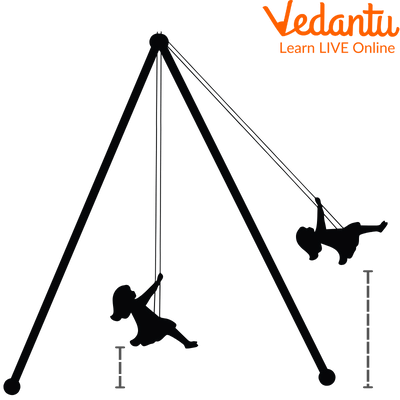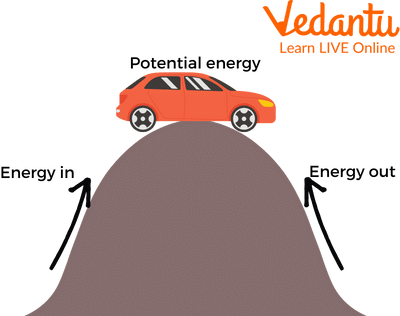




What is Mechanical Energy?
Do you know what energy is? We need the energy to perform any kind of work like reading, writing, etc. There are different forms of energy. So, let us learn all about them! The energy which is possessed by a body due to its position or motion is called mechanical energy. It is of two types:
Kinetic Energy
Potential Energy
Mechanical energy is the total output of kinetic energy and potential energy. According to the principle of conservation, mechanical energy will be constant if an isolated system is subjected only to conservative forces. It is the energy used to do a particular work. In a mechanical system, friction is always present. There are many examples of mechanical energy in our daily life. Some of them include wrecking balls, hammers, dart guns, etc. Now, we know what mechanical energy is.
Kinetic Energy
The energy possessed by a body the virtue of its motion is known as kinetic
energy. Kinetic energy depends on two factors:
Mass of the body
Speed of the body
The mass of the body is directly proportional to kinetic energy. More mass leads to more kinetic energy. Less mass leads to less kinetic energy. Kinetic energy is also directly proportional to the speed of the body. More speed, more kinetic energy. Less speed, less kinetic energy.
Eg - A man who got hit by a car at 80 km/h speed will hurt more than the man who got hit by a car at 40 km/h speed. If we consider a body of mass moving with a speed 'v', then the kinetic energy possessed by it is given by
K. E. = 1/2 mv2.
According to this relation, if the mass of the body is doubled, its kinetic energy will also be doubled. However, if the speed of the body is doubled, its energy will increase four times.

Kinetic Energy
Potential Energy
The energy that is possessed by a body by its position or configuration is known as potential energy.
It is of two types:
Gravitational Potential Energy
Elastic Potential Energy

Potential Energy
Gravitational Potential Energy
It is the energy stored by an object due to its height in the gravitational field. For example, a stone at the top hill possesses gravitational potential energy. Water stored in a dam is an example of potential energy due to its height. This water is used to generate electricity known as hydroelectricity.
Visible Stored Energy
Compared and different types of putting away energy, putting away mechanical energy are the simplest for individuals to see in the world. This is because, likewise with moving energy, it includes whole articles. An observer can perceive that a stone on top of a slope could move. In different types of energy, the potential energy isn't apparent. The stored energy of chemical energy exists in the bonds among molecules and atoms inside a substance. The stored energy of thermal power keeps intact the nucleus.
Mechanical Energy and Work
Machines utilise mechanical energy to take care of work. For example, a hammer uses mechanical energy to drive a nail into a board. When the sled is raised, it has potential energy from the work done in lifting it. At the point when the hammer is advanced toward the nail, the potential energy becomes active energy, which can accomplish work by driving the nail into the board. There are many more uses of mechanical energy.
At the point when the sled stirs things up around town, energy is moved to the nail and afterward to the board. Humans utilise mechanical energy to do work, for example, when birds fly or fish swim. People likewise utilise mechanical energy to take care of work—for example, an individual uses mechanical energy to score an objective in a soccer match. At the point when the individual's foot reaches out back, it has likely energy. At the point when the foot kicks forward, the potential energy moves toward kinetic energy to drive the ball into the goal.
Summary
Mechanical energy is a form of energy. It depends upon the motion and position of the object. Kinetic energy is possessed due to motion. The types of mechanical energy include kinetic energy and potential energy. Here we have explained them in detail with examples as well. Mechanical energy depends upon the position and kinetic energy depends upon the motion. There are many more interesting facts about different forms of energy. We will get to know you in detail. Examples of mechanical energy are also explained.
FAQs on Mechanical Energy
1. Is sound energy included under mechanical energy?
When a force, such as sound or pressure, causes an item or substance to vibrate, the consequence is sound energy. Waves of that energy pass through the substance. We refer to the sound waves as kinetic mechanical energy.
2. Which energy source produces the least waste?
Renewable energy sources like sun and wind don't consume fuel and emit no greenhouse gases. They are much more efficient at converting energy into electricity, producing less waste and cost-saving results.
3. What constitutes the main energy source?
On earth, the sun serves as the primary energy source. There are numerous alternative energy sources, including coal, geothermal, wind, biomass, petroleum, and nuclear energy. Based on their potential to be sustained, energy is divided into two categories: renewable and non-renewable sources.





















